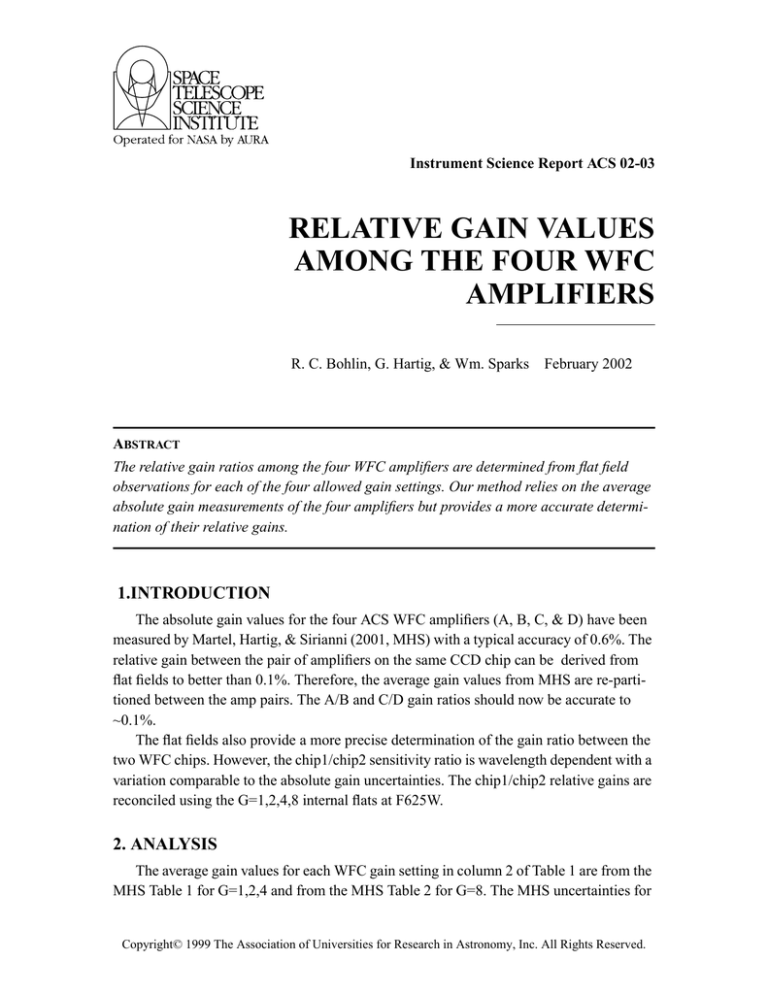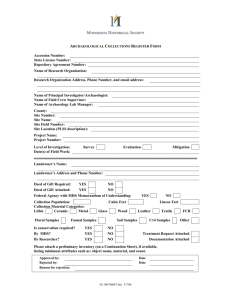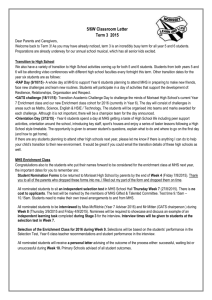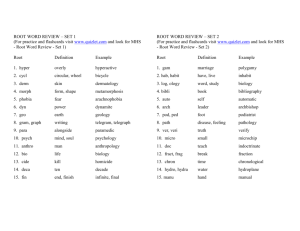
Instrument Science Report ACS 02-03
RELATIVE GAIN VALUES
AMONG THE FOUR WFC
AMPLIFIERS
R. C. Bohlin, G. Hartig, & Wm. Sparks
February 2002
ABSTRACT
The relative gain ratios among the four WFC amplifiers are determined from flat field
observations for each of the four allowed gain settings. Our method relies on the average
absolute gain measurements of the four amplifiers but provides a more accurate determination of their relative gains.
1.INTRODUCTION
The absolute gain values for the four ACS WFC amplifiers (A, B, C, & D) have been
measured by Martel, Hartig, & Sirianni (2001, MHS) with a typical accuracy of 0.6%. The
relative gain between the pair of amplifiers on the same CCD chip can be derived from
flat fields to better than 0.1%. Therefore, the average gain values from MHS are re-partitioned between the amp pairs. The A/B and C/D gain ratios should now be accurate to
~0.1%.
The flat fields also provide a more precise determination of the gain ratio between the
two WFC chips. However, the chip1/chip2 sensitivity ratio is wavelength dependent with a
variation comparable to the absolute gain uncertainties. The chip1/chip2 relative gains are
reconciled using the G=1,2,4,8 internal flats at F625W.
2. ANALYSIS
The average gain values for each WFC gain setting in column 2 of Table 1 are from the
MHS Table 1 for G=1,2,4 and from the MHS Table 2 for G=8. The MHS uncertainties for
Copyright© 1999 The Association of Universities for Research in Astronomy, Inc. All Rights Reserved.
Instrument Science Report ACS 02-03
the average gains are 0.3% for G=1,2,4 and 0.4% for G=8. The relative gains are measured
along eight pixel wide strips at adjacent edges of the amplifier pairs on each chip and at
the adjacent edges of the butt crack between the two chips using the program gainrat.pro.
While our relative A/B and C/D gains measured from the relative response at the adjacent
edges of the AB and CD amp pairs are accurate to 0.1%, relative values between the chips
depends on the assumption of equal sensitivities at F625W. The average chip1/chip2
response varies with wavelength by <0.5% from F475W to F850LP and by ~0.7% at
F435W.
Table 1. Average Absolute Gains and New Individual Gain Values
Nominal Gain Average Amp A Amp B Amp C Amp D
1
1.0002
0.9999
0.9721 1.0107 1.0180
2
2.008
2.018
1.960
2.044
2.010
4
3.990
4.005
3.897
4.068
3.990
8
7.96
7.974
7.735
8.023
8.107
3. REPEATABILITY AND UNCERTAINTIES
Our repartitioned gains in Table 1 agree with the absolute MHS gain measurements
within the quoted uncertainties. The largest difference is ~2% or 3-sigma for the amp C
gain value of 4.068. The earlier measurement at the component level is 4.045, while the
MHS Table 2 value is 4.01, both higher than their Table 1 value of 3.98. However, more of
our Table 1 values are closer to MHS than to the bench data for the individual amps. The
biggest difference between the MHS average values and the bench averages is 1.5% at
gain 2, which suggest that the one-sigma uncertainty of 0.3% quoted by MHS is better
than the uncertainty in the bench values, despite the extra digit of precision that is attached
to the bench gain values. A discontinuity in the flat fields is caused by using the unreconciled bench gain values, as illustrated in Figures 3-4 of Bohlin, Hartig, and Martel (2001).
The same flats re-made with the Table 1 gain values show no discontinuity between the
quadrants that are read by the four amplifiers.
REFERENCES
Martel, A., Hartig, G., & Sirianni, M. 2001, http://acs.pha.jhu.edu /instrument/calibration/results/by_item/detector/wfc/build4/gain/,(MHS)
R. C., Hartig, G. & Martel, A. 2001, Instrument Science Report, ACS 01-11, (Baltimore:STScI) Instrument Science Report ACS 2000-00
2







